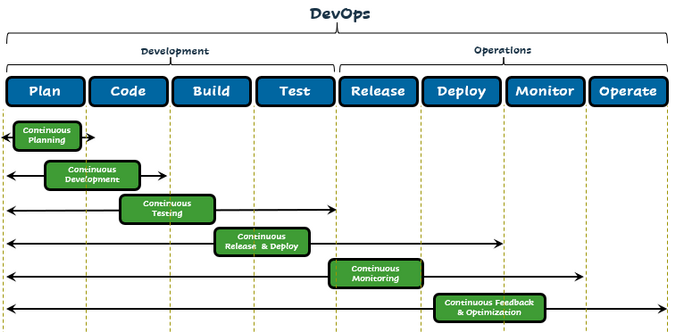Marco Bravo

If you don’t know, ask – if you know, share! ~ opensource mindset
![]()
➠ "We may not have control over our circumstances, but we do have control over our minds"
➠ What do I want to do next?

A beginner's guide to everything DevOps
by Marco Bravo

Take a fresh look at why DevOps is important, what it means for IT professionals, and its methods, frameworks, and tools.
While there is no single definition, I consider DevOps to be a process framework that ensures collaboration between development and operations teams to deploy code to production environments faster in a repeatable and automated way. We will spend the rest of this article unpacking that statement.
In simple terms, DevOps is an alignment between development and IT operations with better communication and collaboration.
The DevOps discussion centers around the relationship between developers, the individuals who write software for a living, and operators, those responsible for maintaining that software.
Instead of releasing a large number of application features at once, companies are trying to see if they can roll out a small number of features to their customers through a series of release iterations. This has several advantages, like better software quality, quicker feedback from customers, etc. These, in turn, ensure high customer satisfaction. To achieve these objectives, companies are required to:
- Lower the failure rate for new releases
- Increase deployment frequency
- Achieve quicker mean time to recovery in the event a new release crashes the application
- Shorten the lead time between fixes
DevOps fulfills all these objectives and helps achieve seamless delivery. Organizations adopt DevOps to achieve levels of performance that were unthinkable even a few years ago. They are doing tens, hundreds, or even thousands of deployments per day while delivering world-class reliability, stability, and security. (Read more about batch sizes and the impact on software delivery.)
DevOps is often discussed in relation to other IT practices, notably agile and waterfall IT.
DevOps lifecycle
- Continuous planning
- Collaborative development
- Continuous testing
- Continuous release and deployment
- Continuous monitoring
- Continuous feedback and optimization
Benefits of DevOps
- Predictability: DevOps offers a significantly lower failure rate for new releases.
- Maintainability: It enables effortless recovery in the event of a new release crashing or disabling the application.
- Reproducibility: Versioning the builds or the code enables earlier versions to be restored as needed.
- Higher quality: Incorporating infrastructure issues improves application development quality.
- Time to market: Streamlined software delivery reduces time to market by 50%.
- Reduced risk: Incorporating security into the software lifecycle reduces defects across its lifecycle.
- Cost-efficiency: Driving cost-efficiency in software development pleases senior management.
- Resiliency: The software system is more stable, secure, and changes are auditable.
- Breaks larger codebase into manageable pieces: DevOps is based on the agile programming method, which supports breaking down larger codebases into smaller, more manageable chunks.
DevOps principles
- Develop and test against a production-like environment
- Deploying with repeatable, reliable processes
- Monitor and validate operational quality
- Amplify feedback loops
DevOps Lifecycle
- Dev
- Plan
- Code
- Build
- Test
- Ops
- Release
- Deploy
- Operate
- Monitor

Continuous feedback and optimization
Continuous feedback and optimization provide visual evidence for analyzing customer journeys and pinpointing pain areas. Feedback can be enabled for both pre- and post-production phases to maximize value and ensure that even more transactions are successfully completed. This provides immediate visibility into the root cause of customer struggles that affect behavior and impact business.

DevOps is an increasingly popular methodology that aims to connect developers and operators into a cohesive unit. It’s uniquely differentiated from traditional IT operations and complements (but is not the same as) agile.
tags: opensource - devops